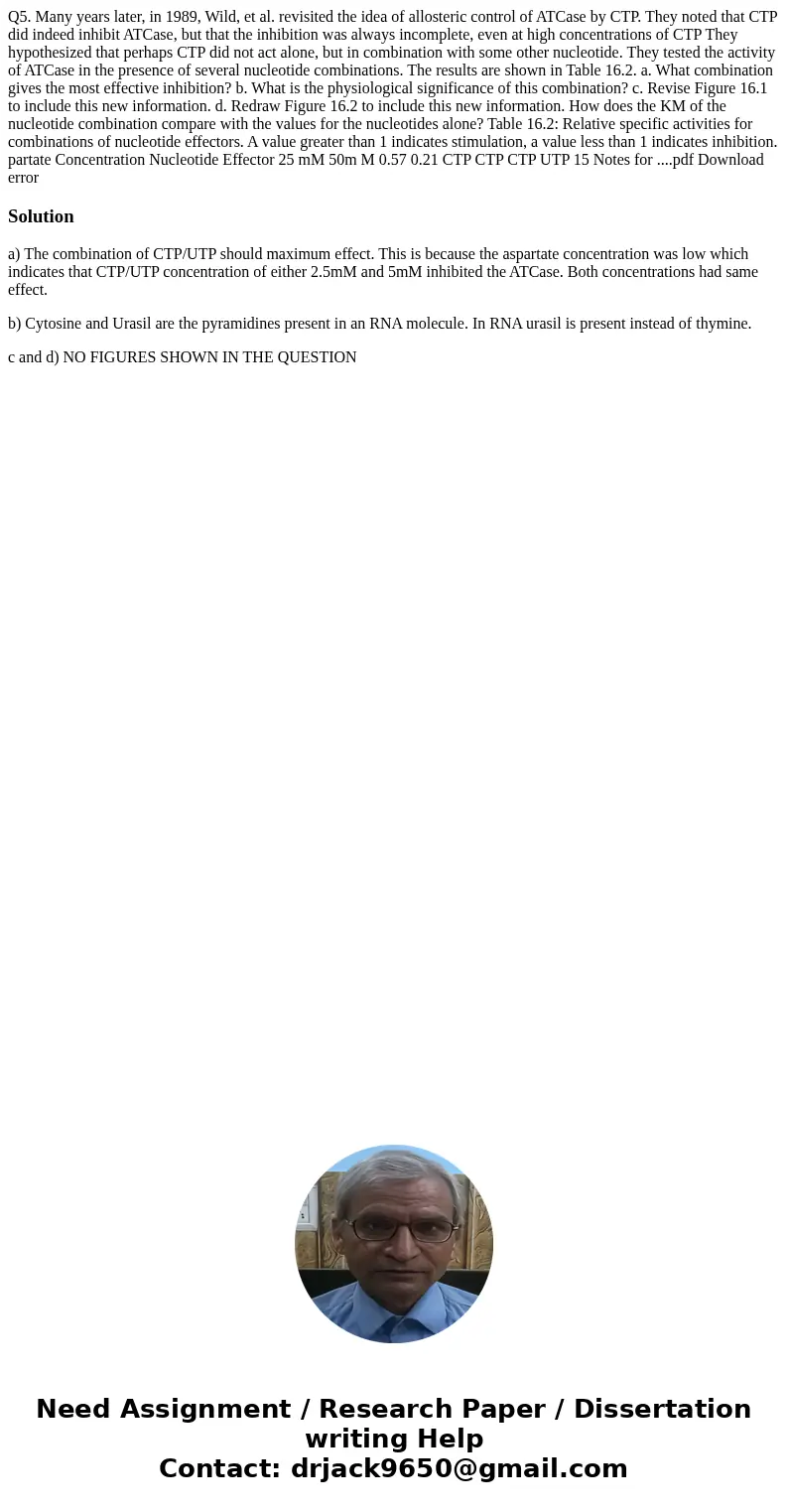Q5 Many years later in 1989 Wild et al revisited the idea of
Q5. Many years later, in 1989, Wild, et al. revisited the idea of allosteric control of ATCase by CTP. They noted that CTP did indeed inhibit ATCase, but that the inhibition was always incomplete, even at high concentrations of CTP They hypothesized that perhaps CTP did not act alone, but in combination with some other nucleotide. They tested the activity of ATCase in the presence of several nucleotide combinations. The results are shown in Table 16.2. a. What combination gives the most effective inhibition? b. What is the physiological significance of this combination? c. Revise Figure 16.1 to include this new information. d. Redraw Figure 16.2 to include this new information. How does the KM of the nucleotide combination compare with the values for the nucleotides alone? Table 16.2: Relative specific activities for combinations of nucleotide effectors. A value greater than 1 indicates stimulation, a value less than 1 indicates inhibition. partate Concentration Nucleotide Effector 25 mM 50m M 0.57 0.21 CTP CTP CTP UTP 15 Notes for ....pdf Download error 
Solution
a) The combination of CTP/UTP should maximum effect. This is because the aspartate concentration was low which indicates that CTP/UTP concentration of either 2.5mM and 5mM inhibited the ATCase. Both concentrations had same effect.
b) Cytosine and Urasil are the pyramidines present in an RNA molecule. In RNA urasil is present instead of thymine.
c and d) NO FIGURES SHOWN IN THE QUESTION

 Homework Sourse
Homework Sourse